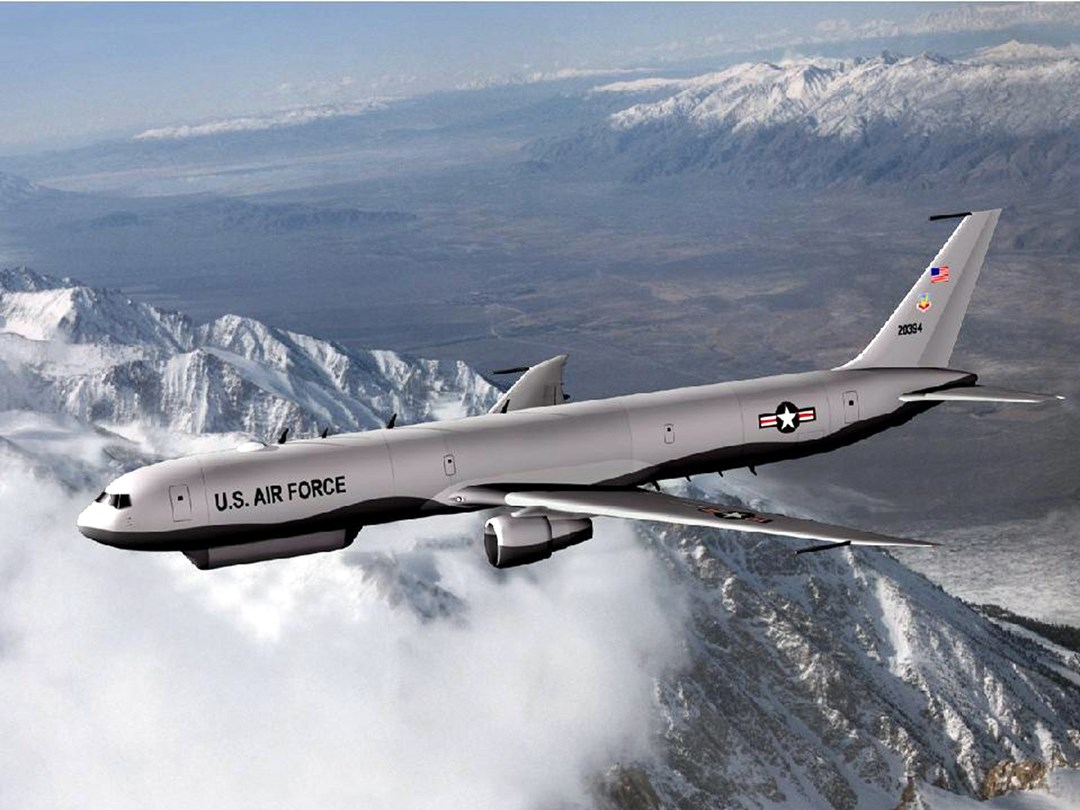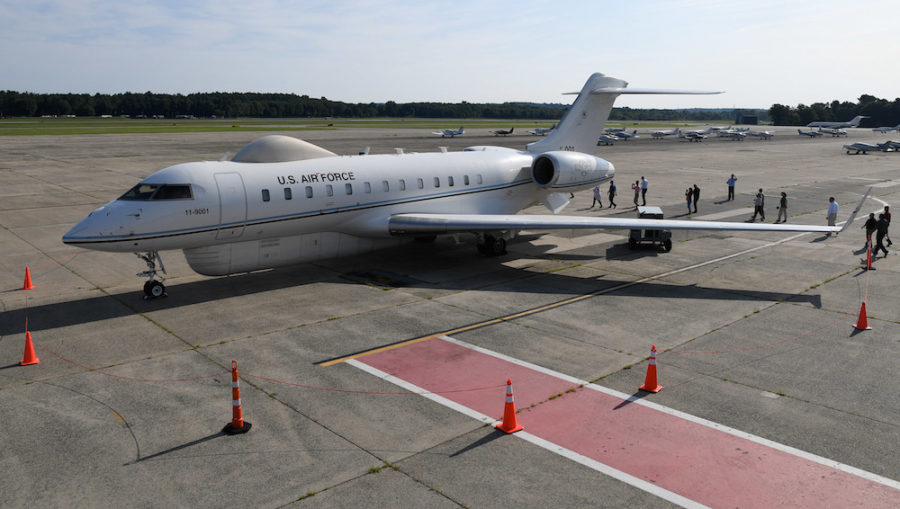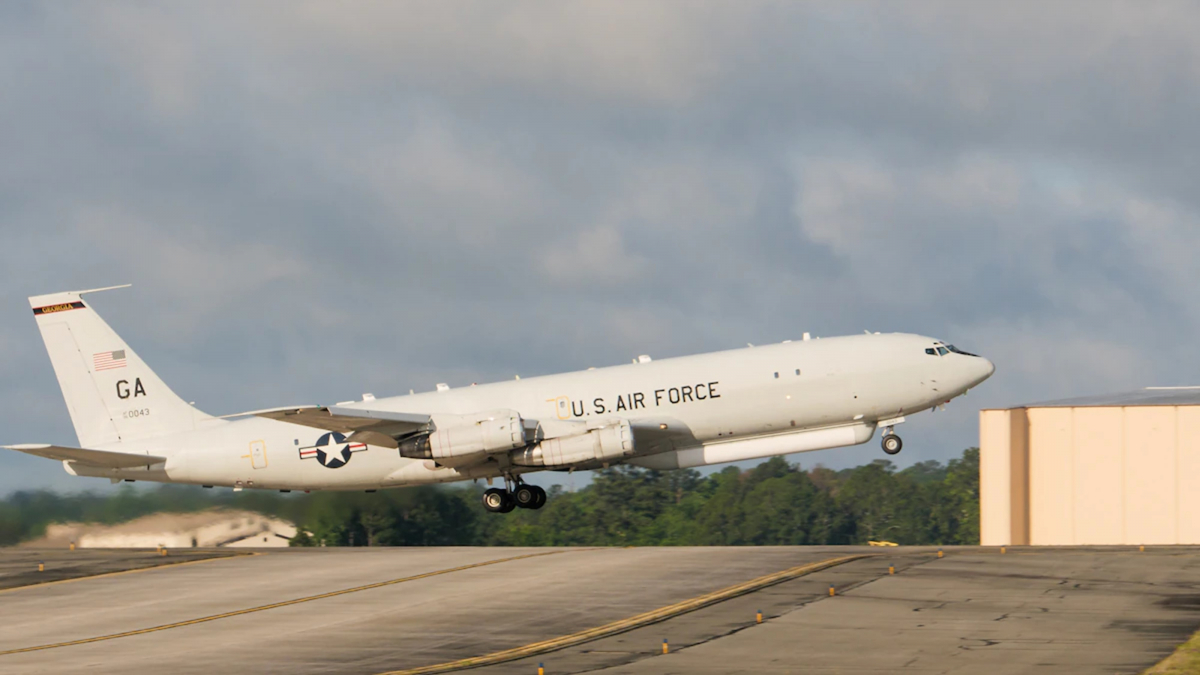The first E-8C Joint STARS has left active duty for the Davis Monthan-Tucson Air Force Base aircraft graveyard. Despite its great reconnaissance and communications capabilities, no aircraft is planned to replace the E-8 fleet in the USAF and ANG.
The U.S. Airborne Armor Detector
The E-8 Joint Surveillance Target Attack Radar System (Joint STARS) is an advanced reconnaissance aircraft only in U.S. service with the USAF and the National Guard Air Force (ANG).
The aircraft is built by Northrop Grumman and is based on the Boeing 707-300. Its main feature is found in the 7.3-meter-long AN/APY-3 radar. This radar allows the aircraft to collect information on ground troops present in an area of 50,000 km² (an area including northern France, Belgium and Luxembourg) and this, at a maximum distance of over 250 km. The radar is also capable of detecting helicopters in flight, radar antennas or small slow aircraft flying close to the ground. These latter capabilities are limited, however.
The missions performed by the E-8 fleet are very varied as they have participated in major U.S. operations since the end of the Cold War where a need for in-depth reconnaissance was required for ground troops or strategic decision-making: hunting Iraqi National Guard armored units during Operation Desert Storm, reconnaissance during operations in the Balkans, a return to Iraq in 2003, Afghanistan (where it will be one of the last aircraft to leave the airspace when the coalition withdraws), or even more recently, Ukraine. E-8s have even been used in counter-narcotics missions.
These aircraft are highly valued by ground troops as they can transmit collected data directly to them. They can then anticipate threats that they are still unable to see.
First to Retire
On Feb. 10, E-8C numbered 92-3289 took off for the last time from its base in Robins and headed to Davis-Monthan AFB, Arizona, where it should probably be stored, given its strategic value. The aircraft in question only served 26 years as an E-8, but previously flew under the colors of Qantas Airways as an airliner. However, although the structure has accumulated many hours of flight, this aircraft has never undergone major repairs, unlike some E-8s that have accumulated many hours in technical hangars. One E-8 even remained in repair for 3 years due to major structural problems.
Three other E-8Cs will join it before the first of October this year. The total withdrawal of the E-8C fleet is planned for around 2025.
A cancelled replacement
In the early 2000s, the Pentagon wanted to begin the process of replacing these aircraft so that it could have the first aircraft in service...in 2022. However, the replacement program was cancelled for budgetary reasons in 2006 (the project was cancelled when the 2007 budget was published). Several aircraft were then in the running to replace it:
- Gulfstream's G550 or G650
- Bombardier's Global 6000
- Boeing's 737
Since then, the E-8Cs have undergone an upgrade in 2013; Northrop Grumman has modernized the operators' consoles, transformed the computer program architecture based on the Linux program, and modified the aircraft's network infrastructure to increase bandwidth and improve communications between operators.


The Advanced Battle Management System
Over the past decade, the need to find a replacement has been pressing, but in 2018, the Pentagon announced the end of the search for a replacement aircraft and its willingness to develop a systems program. These are to link the various existing platforms to allow each user to track targets on the ground.
Today, this program is under development (Advanced Battle Management System, ABMS). Research appears to be focused on linking various air, ground and space-based equipment. An airborne communications relay is also planned via the use of an E-11A squadron - the military version of the Bombardier Global 6000 - but which in no way has the radar capabilities of the E-8C because it is an aircraft specifically equipped with advanced communications equipment.


Découvrez cet article sur Air&Cosmos

